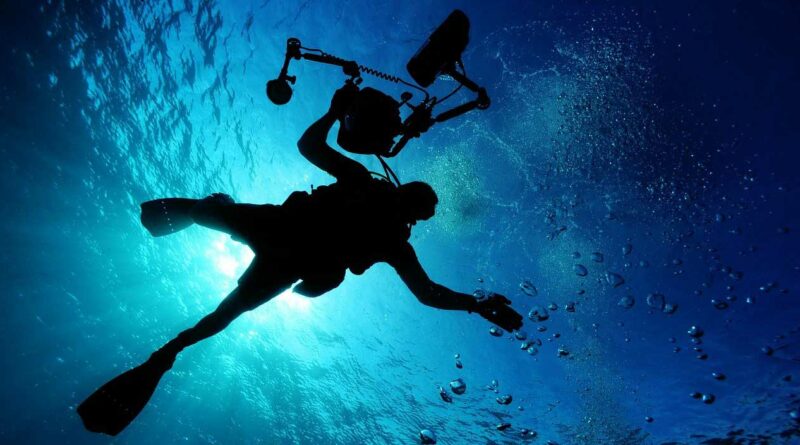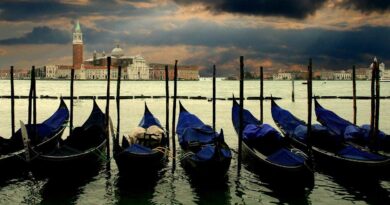The Most Unusual Diving Spots
In anticipation of the winter holidays, it’s time to think about choosing a new travel destination. Why not try your hand at diving and snorkeling?
Dive Butler International is a global leader in the recreational diving industry and organizes private dives in northern seas, caves, cenotes and other unusual places around the world.
Diving in the underwater caves of the Maldives
It is no coincidence that professional scuba divers choose the Maldives for their dives. The crystal-clear waters of the Indian Ocean, combined with a mild climate, create the ideal conditions for diving. LUX * North Male ‘Atoll has one of the finest house reefs in the northern Maldives. All hotel guests can snorkel along the coastline daily, or scuba dive to a depth of 30 meters. It is here that a picturesque underwater cave is located – the habitat of rare corals, as well as stingrays, turtles and whiskered nurse sharks. The marine flora and fauna of the Maldives is considered one of the richest and most diverse in the world and absolutely deserves the attention of both beginners and experienced divers.
Diving in Tulum Cenotes
Cenotes are one of the most famous landmarks in Mexico. These are underground caves filled with clear water and ideal for diving. Cenotes of Tulum are considered one of the most popular diving sites. For example, the Grand Cenote, where you can meet freshwater turtles, all surrounded by majestic columns of stalactites. Also popular among divers is the Skull Cenote, which received this name due to the three characteristic holes in the cave through which sunlight penetrates. The clear emerald waters are ideal for swimming, diving and snorkeling. There is also a platform for cliff diving or jumping into the water from great heights. The available immersion depth reaches 16 meters.
Diving between tectonic plates in Iceland
On the territory of Thingvellir National Park, which is located in the southern part of Iceland, one can observe a unique natural phenomenon – the separation of the North American and Eurasian tectonic plates. The place is included in the United Nations World Heritage List and is under the protection of UNESCO. You can visit the park not only as part of a walk, but also dive into the Silfra Gorge, which formed between two tectonic plates connecting Europe and North America. Without exaggeration, this is one of the most unique diving spots. Only here can you observe large trout and arctic char in their natural habitat.
Diving in the mountain rivers of Switzerland
The famous Lake Geneva can be an ideal destination for both casual snorkeling and more serious diving. For example, aboard a sunken ship. Another location is Lake Zurich. The beauty of the surrounding landscapes is already breathtaking. Add to this the picturesque flora and fauna with crystal clear waters and you have the perfect diving site. Of the rivers, Verzasca is best suited for diving. This 30-kilometer mountain river, which is located in the valley of the same name in the Italian-speaking part of Switzerland, is rightfully considered the most transparent in the world. It originates at the top of a mountain with a height of 2864 meters, then its path runs south through picturesque valleys, where the river flows into Maggiore – a mountain lake between Switzerland and Italy. The Verzasca River is famous for its crystal-clear turquoise waters and colorful multicolored stones that dot its bottom.
Diving in a sunken city in eastern China
Few people know that deep under the calm waters of Lake Qiandao in the Chinese province of Zhejiang are hidden mysterious ruins of an ancient city dating back to the Han and Tang dynasties. It is believed that the city of Shi Cheng (also known as the Lion City) was built during the Tang Dynasty in 621 AD and was flooded over fifty years ago in what is now East China. Lake Qiandao, also known as the Lake of a Thousand Islands, covers a total area of 573 square kilometers. kilometer. Today, diving tours are held here, during which you can explore the ruins of the once great city in every detail.
Based on the records of the history of the region, it can be assumed that the city was quite large – its territory was about 60 football fields. The ruins of the sunken city lay intact at the bottom of the lake until 2001, when gradual exploration and restoration of its historical appearance began. At the same time, efforts were made to map and document the area by professional divers and explorers. In January 2011, Lion City was declared a historical relic and is now under the protection of Zhejiang Province.




